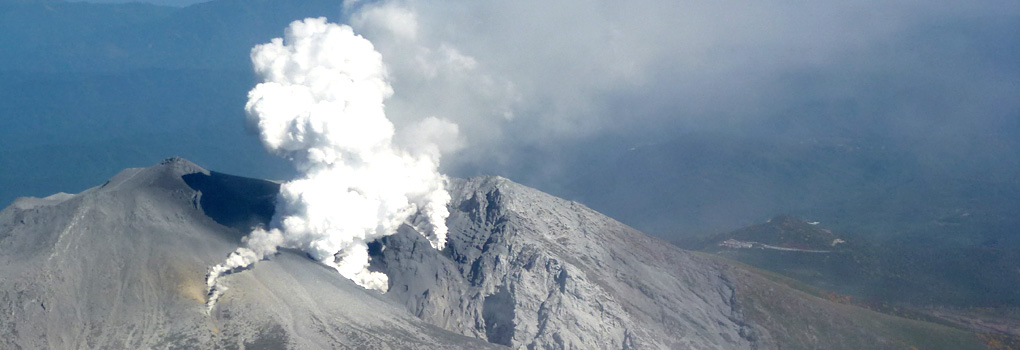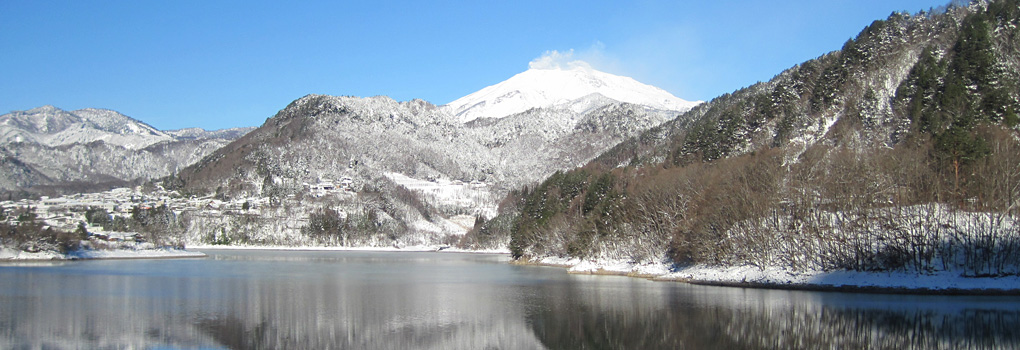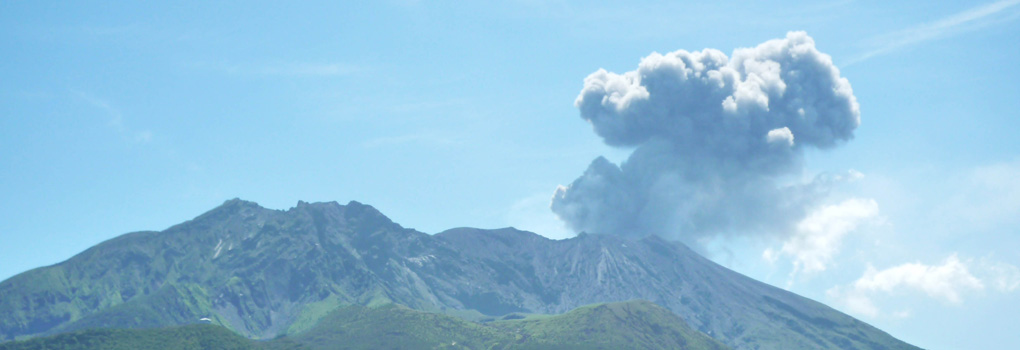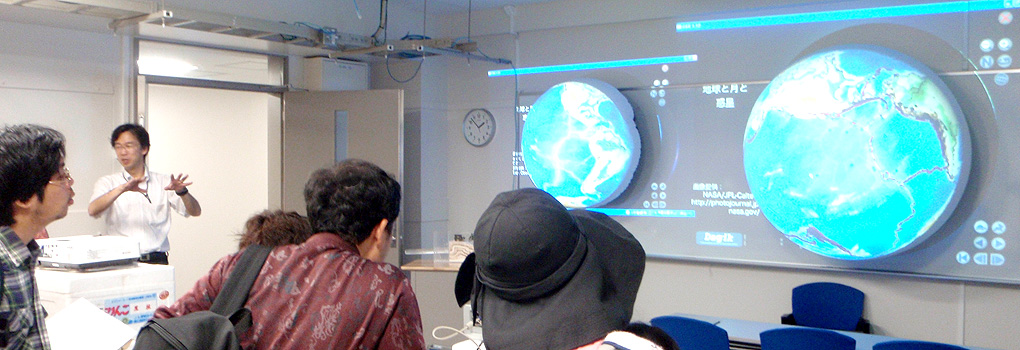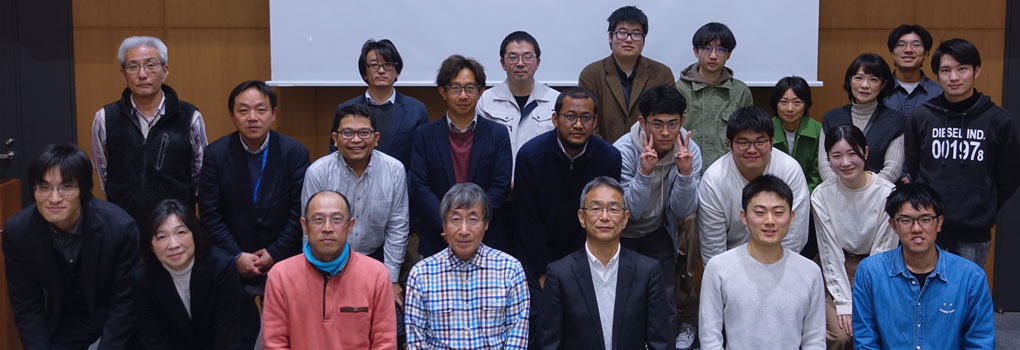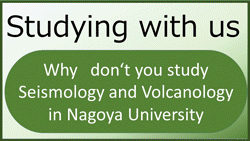News
Research Report
Earthquake & Volcano Report
Research from the Earthquake and Volcano Research Center
- Crustal Activity
Simulation of the
Japanese Archipelago - Earthquake & Crustal
Movement Observation
and Research - Research on
Seafloor & Onland
Active Faults - The ACROSS System
deployed in
the Tokai Region - Observation of
Sea Floor
Crustal Movement
Crustal Activity Simulation of the Japanese Archipelago

Through physical modeling of crustal movement arising from plate interactions and a large-scale numerical simulation based on those models, we aim to achieve a unified understanding of the diverse crustal activity phenomena which lead to large earthquakes.
The integration of data obtained from various observations and data analysis of crustal activity monitoring into the simulation in addition to the advancement of the system are important factors for constructing a simulation system in crustal activities and enabling predictions based on it.
The Center conducts research in order to test and verify the approach that combines these sorts of simulations and monitoring.
Earthquake & Crustal Movement Observation and Research
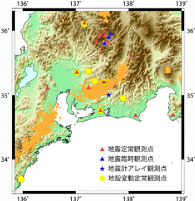
The Earthquake and Volcano Research Center conducts routine observation with the earthquake and crustal movement observation station network in the Tokai region. In particular, ithe center carries out intense observation research in Mt. Ontake region, because it erupted on a small scale in 1991 and 2007 after the phreatic eruption in 1979. Furthermore, the earthquake swarm which started in 1976 on the southeast side of Mt. Ontake continues and gradually expands its epicentral area to the north east since the Western Nagano Prefecture Earthquake in 1984.The Center also carries out seismic array observations to identify low-frequency seismic tremors, and jointly conducts aftershock observation with nationwide universities to understand the mechanism of disastrous earthquakes.
Research on Seafloor & Onland Active Faults
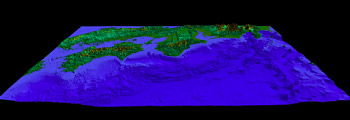
When a large earthquake occurs, fault scarps appear on the ocean floor or onland ground surface. The traces of the fault lines remain as geographical features.
These features not only include linear scarps, but also appear in warps or uplifts over wide areas.
The resulting topographic variations can be seen throughout the islands of Japan and the surrounding ocean floor and provide strong bases for hypotheses as to the existence of underground earthquake source faults. The ocean floor along the Nankai Trough is far more complex than the Sea of Japan side, and the Center aims to find out the origin.
The ACROSS System deployed in the Tokai Region
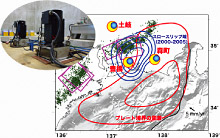
Nagoya University's world leading development, the ACROSS System, constantly emits seismic waves underground and catches the returning signals with a seismometer to track the temporal changes in the subsurface structure. Currently, the Center is engaged in R & D to support continuous monitoring of volcanoes and places where earthquakes occur, in cooperation with Shizuoka University, the Meteorological Research Institute, and Kagoshima University.
In the Tokai region where slow slips occur occasionally making the area prone to great earthquakes, research is being conducted to identify changes in plate coupling using the ACROSS systems installed in three places.
Observation of Sea Floor Crustal Movement - Direct Measurement of Crustal Stain in the Nankai Trough area -
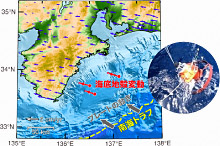
Great earthquakes in the Nankai Trough and Off the Pacific Coast of Tohoku Earthquakes occur at the plate boundaries located in ocean area. The observation results of the sea floor crustal movement provide essential data for studying earthquakes and tsunami in the ocean.The Earthquake and Volcano Research Center started developing the measuring equipment for this purpose more than ten years ago. Currently, the equipment is placed on the ocean floor of Kumano-nada and Suruga Bay, where direct measurement of sea floor crustal movement generated from plate motion in the Nankai Trough area is possible from onboard a boat maneuvered to the target area. We have come to understand the manner in which continuous accumulation of crustal strain leading to the next earthquake from the observation results of Kumano-nada.
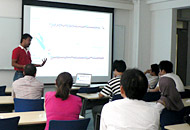
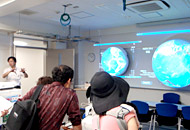
Earth and Planetary Dynamics Group
Academic staff at our research center belong to the Graduate School of Environmental Studies, supporting the research and education of graduate students majoring in Earth and Planetary Dynamics of Earth and Environmental Sciences courses.
The academic staff also teach the Faculty students in the School of Science, supporting the fourth year students enrolled in the Earth and Planetary Physics Course in their graduation theses.

